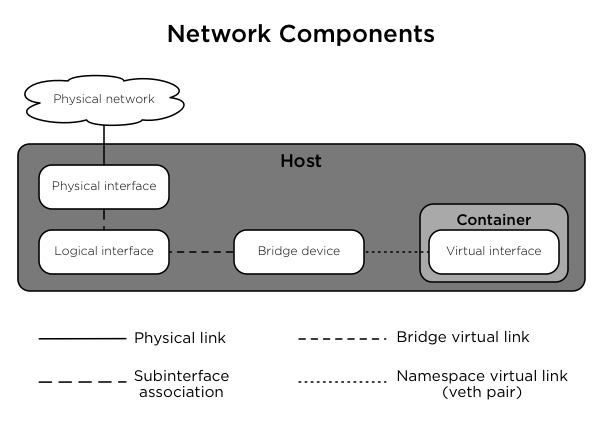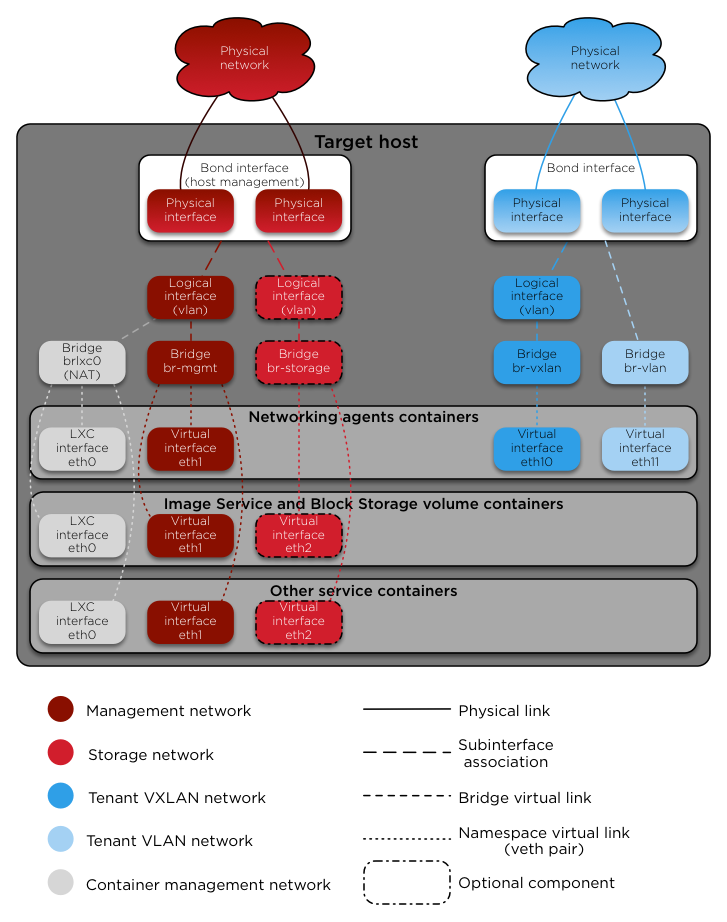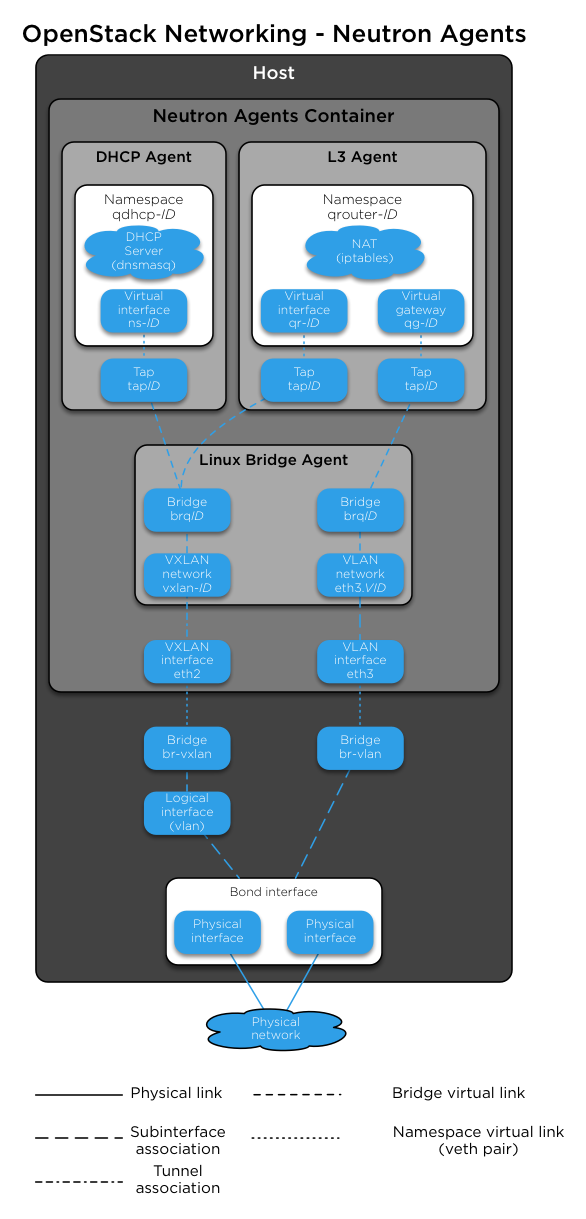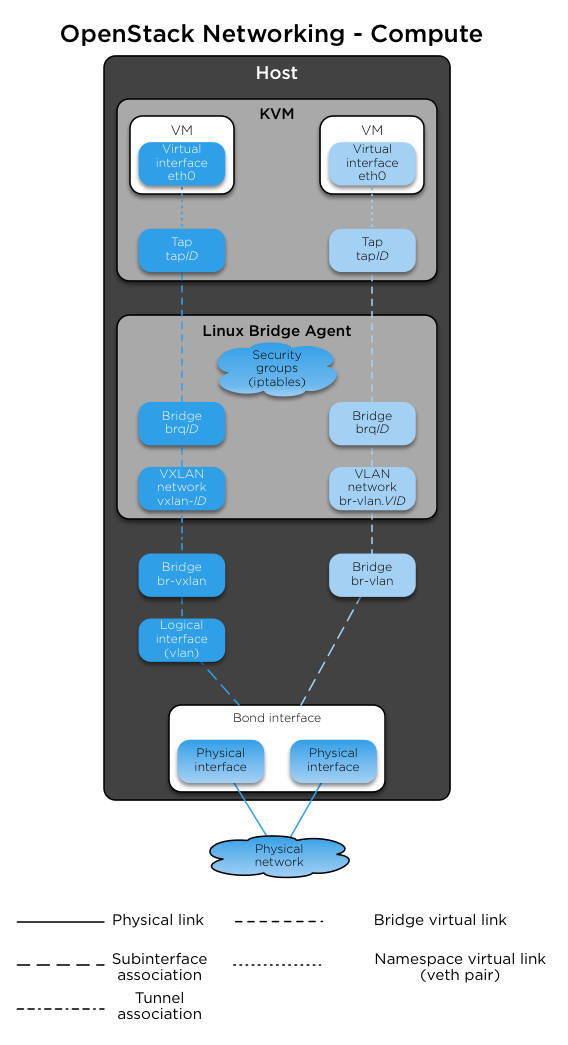Home OpenStack-Ansible Installation Guide
Configuring the network¶
This section describes the recommended network architecture. Some components are mandatory, such as the bridges described below. We recommend other components such as a bonded network interface but this is not a requirement.
Important
Follow the reference design as closely as possible for production deployments.
Although Ansible automates most deployment operations, networking on target hosts requires manual configuration as it varies dramatically per environment. For demonstration purposes, these instructions use a reference architecture with example network interface names, networks, and IP addresses. Modify these values as needed for your particular environment.
Bonded network interfaces¶
The reference architecture includes bonded network interfaces, which use multiple physical network interfaces for better redundancy and throughput. Avoid using two ports on the same multi-port network card for the same bonded interface since a network card failure affects both physical network interfaces used by the bond.
The bond0 interface carries traffic from the containers running your OpenStack infrastructure. Configure a static IP address on the bond0 interface from your management network.
The bond1 interface carries traffic from your virtual machines. Do not configure a static IP on this interface, since neutron uses this bond to handle VLAN and VXLAN networks for virtual machines.
Additional bridge networks are required for OpenStack-Ansible. These bridges connect the two bonded network interfaces.
Adding bridges¶
The combination of containers and flexible deployment options require implementation of advanced Linux networking features, such as bridges and namespaces.
Bridges provide layer 2 connectivity (similar to switches) among physical, logical, and virtual network interfaces within a host. After creating a bridge, the network interfaces are virtually plugged in to it.
OpenStack-Ansible uses bridges to connect physical and logical network interfaces on the host to virtual network interfaces within containers.
Namespaces provide logically separate layer 3 environments (similar to routers) within a host. Namespaces use virtual interfaces to connect with other namespaces, including the host namespace. These interfaces, often called veth pairs, are virtually plugged in between namespaces similar to patch cables connecting physical devices such as switches and routers.
Each container has a namespace that connects to the host namespace with one or more veth pairs. Unless specified, the system generates random names for veth pairs.
The following image demonstrates how the container network interfaces are connected to the host’s bridges and to the host’s physical network interfaces:

Target hosts can contain the following network bridges:
- LXC internal lxcbr0:
- This bridge is required, but LXC configures it automatically.
- Provides external (typically internet) connectivity to containers.
- This bridge does not directly attach to any physical or logical interfaces on the host because iptables handles connectivity. It attaches to eth0 in each container, but the container network interface is configurable in openstack_user_config.yml in the provider_networks dictionary.
- Container management br-mgmt:
- This bridge is required.
- Provides management of and communication among infrastructure and OpenStack services.
- Manually creates and attaches to a physical or logical interface, typically a bond0 VLAN subinterface. Also attaches to eth1 in each container. The container network interface is configurable in openstack_user_config.yml.
- Storage br-storage:
- This bridge is optional, but recommended.
- Provides segregated access to Block Storage devices between Compute and Block Storage hosts.
- Manually creates and attaches to a physical or logical interface, typically a bond0 VLAN subinterface. Also attaches to eth2 in each associated container. The container network interface is configurable in openstack_user_config.yml.
- OpenStack Networking tunnel br-vxlan:
- This bridge is required.
- Provides infrastructure for VXLAN tunnel networks.
- Manually creates and attaches to a physical or logical interface, typically a bond1 VLAN subinterface. Also attaches to eth10 in each associated container. The container network interface is configurable in openstack_user_config.yml.
- OpenStack Networking provider br-vlan:
- This bridge is required.
- Provides infrastructure for VLAN networks.
- Manually creates and attaches to a physical or logical interface, typically bond1. Attaches to eth11 for vlan type networks in each associated container. It does not contain an IP address because it only handles layer 2 connectivity. The container network interface is configurable in openstack_user_config.yml.
- This interface supports flat networks with additional bridge configuration. More details are available here: Configuring target host networking.
Network diagrams¶
The following image shows how all of the interfaces and bridges interconnect to provide network connectivity to the OpenStack deployment:

OpenStack-Ansible deploys the compute service on the physical host rather than in a container. The following image shows how to use bridges for network connectivity:

The following image shows how the neutron agents work with the bridges br-vlan and br-vxlan. OpenStack Networking (neutron) is configured to use a DHCP agent, L3 agent, and Linux Bridge agent within a networking-agents container. The image shows how DHCP agents provide information (IP addresses and DNS servers) to the instances, and how routing works on the image:

The following image shows how virtual machines connect to the br-vlan and br-vxlan bridges and send traffic to the network outside the host:
